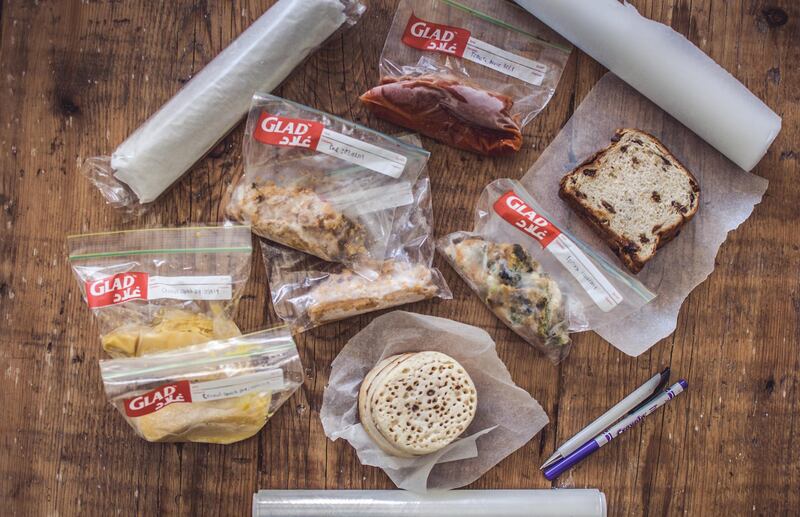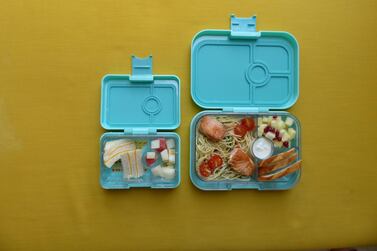The issue of food waste is one that we're all becoming increasingly aware of and know we need to take responsibility for. Yet when the problem is this big – it's estimated by the UN that more than a billion tonnes of food is wasted globally each year – it can be difficult to know where to begin. Consider these eight ideas, which can be implemented to make an impact on an individual level.
1. Shop consciously
Colette Barr is the founder of Save our World Middle East, an initiative in the UAE dedicated to raising awareness about environmental issues. She says that taking a prevention-rather-than-cure approach from the outset is essential. "Always do your food shop from a list, with specific meals in mind. Check your fridge and cupboards before you start to make sure you only buy what you need," Barr advises. "It's actually better to shop more frequently, for less; that way you minimise wastage and don't end up unnecessarily stockpiling produce."
2. Get label-savvy
Familiarising yourself with food labels will pay dividends. Use-by dates are the ones you really need to pay attention to, particularly for highly perishable items (think meat, fish and dairy) as they relate to safety. You can, however, eat items on their use-by date and you can also freeze them on that day. Best-before (BB) dates, meanwhile, are intended as more of a quality indicator: food is still OK to eat after its BB date, but it might not be at its optimum from a taste or texture perspective.
Always check the expiry date of fresh products before you buy them. It’s well worth having a scout of the shelves so that you can pick items with the longest use-by date. If you’re doing an online order, put in a request asking for the same.
3. Organise your fridge
When you return home after a grocery shop or receive a delivery, rather than piling the new items on top or in front of those already there, reorganise your shelves. Think of this as stock rotation: put new items at the back, move the older products upfront and do an expiry date check. That way when you open the fridge, you'll know which ingredients need using up first.
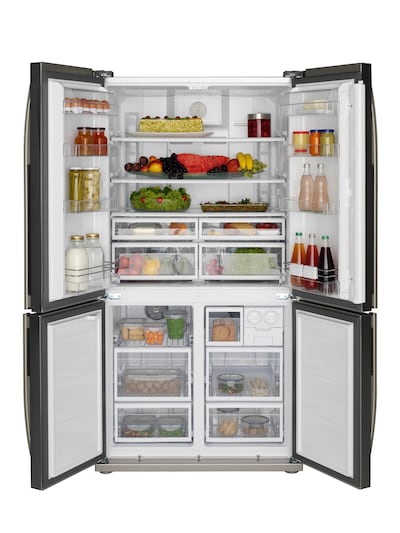
4. Have fun freezing
In the fight against food waste, your freezer should be one of your most regularly deployed weapons. While it's no revelation to suggest freezing excess cooked food, you might be surprised by the number of products that can be successfully frozen. Hard and semi-hard cheeses such as Parmesan, cheddar, Gouda and Gruyere will all survive sub-zero temperatures pretty much unscathed, as will pre-packed shredded cheese.
Because of their high oil count, nuts and seeds can go rancid quickly at room temperature. Pop them in the freezer, though, and you'll extend their shelf life.
There’s something ever-so irritating about opening up a bag of recently bought flour to find it infested with weevils. Keep your flour in the freezer and no such issues will arise.
Should you end up with a glut of fresh fruit, blitz it with thick Greek yogurt and freeze to make home-made ice lollies or simply portion the fruit into grab-and-go bags that will sit in the freezer ready to be turned into a breakfast smoothie.
Unpeeled ginger keeps well in the freezer; just grate it from frozen as and when you need it.
Both separated egg whites and yolks can be stored in the freezer. Egg whites will freeze well as is and mixing the yolks with a little fine salt (if the dish you intend to use them for in the future is savoury) or caster sugar (for sweet) will prevent them from turning paste-like. Chill these in ice-cube trays for maximum convenience and ease of thawing.
5. Introduce the fridge forage meal solution
ntroduce the concept of a fridge forage night to your weekly meal repertoire and you’ll see an instant reduction in the amount of food you waste. The idea here being that you construct dinner (or lunch) out of the contents of a depleted-looking fridge, effectively conjuring up a meal out of nothing. While this does require a bit of creative thinking on the part of the cook, the results can be unexpectedly delicious.
A frittata will happily house a whole host of items that need using up: nubbins of cheese, half heads of broccoli or cauliflower that have seen livelier days, sliced sweet or regular potatoes sauteed with a tangle of red onions and pretty much any fresh herb going.
Give vegetables that have started to shrivel a bit of TLC and you’ll find yourself with meal options aplenty: slice, toss with good-quality olive oil and roast in the oven until sweet and soft. You can then blitz them with stock, tinned tomatoes or coconut milk to make soup; pile onto thick slices of toast; stir through pasta, quinoa or couscous; or serve with chicken or fish.
Egg fried rice only tastes better when you add leftovers or extra ingredients that need using up: think sliced spring onions or leeks, sweetcorn kernels, peas, handfuls of cooked shredded meat, prawns, smoked salmon, herbs, ginger and garlic.
6. Scrap happy
Those little odds and ends languishing in the back of the fridge or cupboard might seem like nothing, but they certainly shouldn't end up in the bin. Chop lacklustre- looking veggies – think carrots, cucumber, broccoli, cauliflower, celery – into batons or pieces, refresh in ice-cold water and serve with a dip made from the last of the sour cream / Greek yogurt / creme fraiche muddled with a bit of feta or cream cheese.
Stale bread can be turned into breadcrumbs and scattered over pasta bakes and gratins; torn into pieces and baked with herbs to make crunchy croutons; tossed with fresh tomatoes and olive oil for an Italian-style panzanella salad; or used to make French toasts or an indulgent bread and butter pudding.
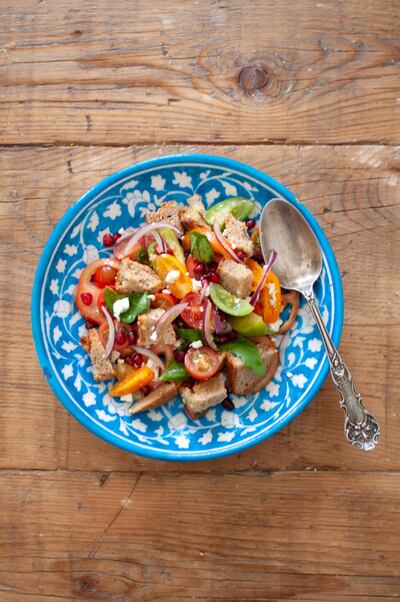
If you’ve been throwing your potato (or carrot, parsnip, sweet potato or beetroot) peelings away, it’s time to think again: toss these with olive oil, and plenty of salt and pepper, and roast in a hot oven until golden brown for a home-made, no-waste take on crisps.
Fruit peels, meanwhile (apple, lemon, lime, orange, cucumber), are fantastic for infusing drinking water with flavour and making it look pretty, too. Or simmer the peels with water and a little honey for a nice take on home-made fruit tea.
Instead of struggling to scrape the last of a condiment from the bottom of the jar, use that jar as the receptacle for your next dressing or sauce. Add honey, olive oil and lemon juice to almost empty mustard jars, then shake to emulsify and drizzle over salads. Turn mayo into Marie Rose sauce with the addition of lemon juice, tomato ketchup and a few drops of Worcestershire sauce. And add coconut milk and a splash of soy sauce to the last of the peanut butter to make an instant satay-style marinade or dip.
Likewise, rather than throwing Parmesan rinds away, add them to simmering soups, stocks and sauces for an additional umami flavour hit.
Recipes rarely call for a whole bunch of herbs, meaning it’s all too easy to end up with a sorry selection of mint, coriander, parsley or basil (or all of the above). Tie those herbs together with a bit of string, hang upside down and leave to dry out in the kitchen for a couple of weeks, then crumble into pieces and store in an airtight jar, as a mixed seasoning.
7. Go old school with pickles and preserves
Home-made pickles, preserves, flavoured vinegars, syrups and cordials will add value to your cupboards, help you save money and assuage your food-waste-related guilt at the same time.
Make apple vinegar by packing apple cores and peels into a clean, airtight jar. Add a little sugar or honey, top up with water and secure with a lid. Leave in a cool, dark place for two to three weeks, then strain before using.
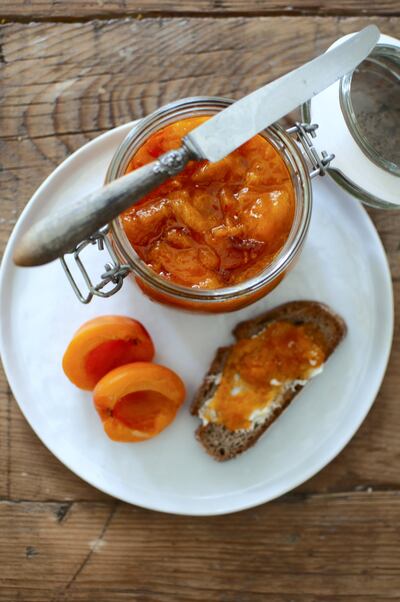
Turn an excess of carrots, radish, cucumber and red onions into a super-quick pickle: whisk together rice vinegar, sugar and salt, add your thinly sliced vegetables and store in sealed containers in the fridge.
Saute the likes of chard and beetroot leaves, rocket, spinach and broccoli stems in olive oil and garlic, then blitz with Parmesan and lemon juice to make pesto.
Use strawberry tops to make fruit syrup by boiling equal parts sugar and water in a pan over a medium heat. Add the strawberry tops, remove from the heat and leave to infuse. Use as you would a cordial.
Home-made jam needn’t mean hours spent monitoring a bubbling pan or a special trip to the supermarket to buy pectin. Simmer cut stone fruits (apricots, peaches, plums and nectarines) with sugar over a medium heat until the fruit starts to break down. Add a squeeze of lemon juice, remove from the heat and leave to cool before storing in the fridge.
8. Become a backyard (or apartment) composter
Making your own compost might sound ambitious – unappealing and messy even – but Barr says it's actually far easier than you might think and hugely beneficial, both to your soil and for the environment.
As well as fruit and vegetable scraps, egg shells, coffee granules, grass clippings, tea and natural tea bags, paper napkins and towels, nut shells, spices, pizza crusts, bread and old cereal are just a few examples of items that be composted. It's worth noting that this isn't just for those with gardens; in-house kitchen composters and bins such as the Bokashi Waste Recycling System mean this is an option wherever you live and however big your family is.
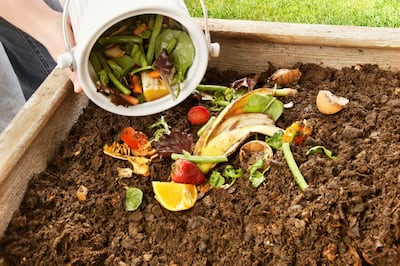
"It might take a few tries to find the right composting bin for your household, but once you do, it really works. Not only that, it's amazing what the composted, fermented food waste can do for your garden. When we lived in an apartment, we used a different kind of bin, but the results were the same," Barr attests.The Composting in the UAE Facebook group set up by My Green Chapter and Bokashi Dubai is an excellent place to start.
